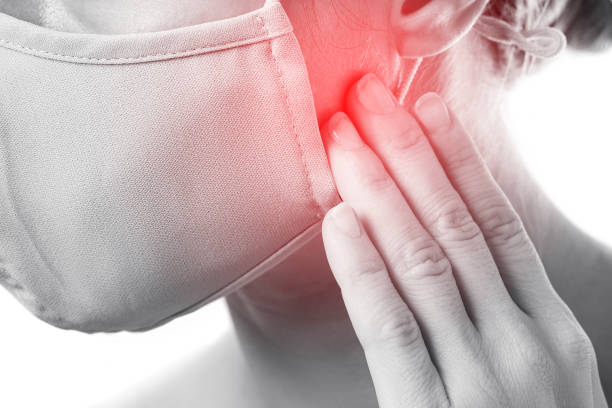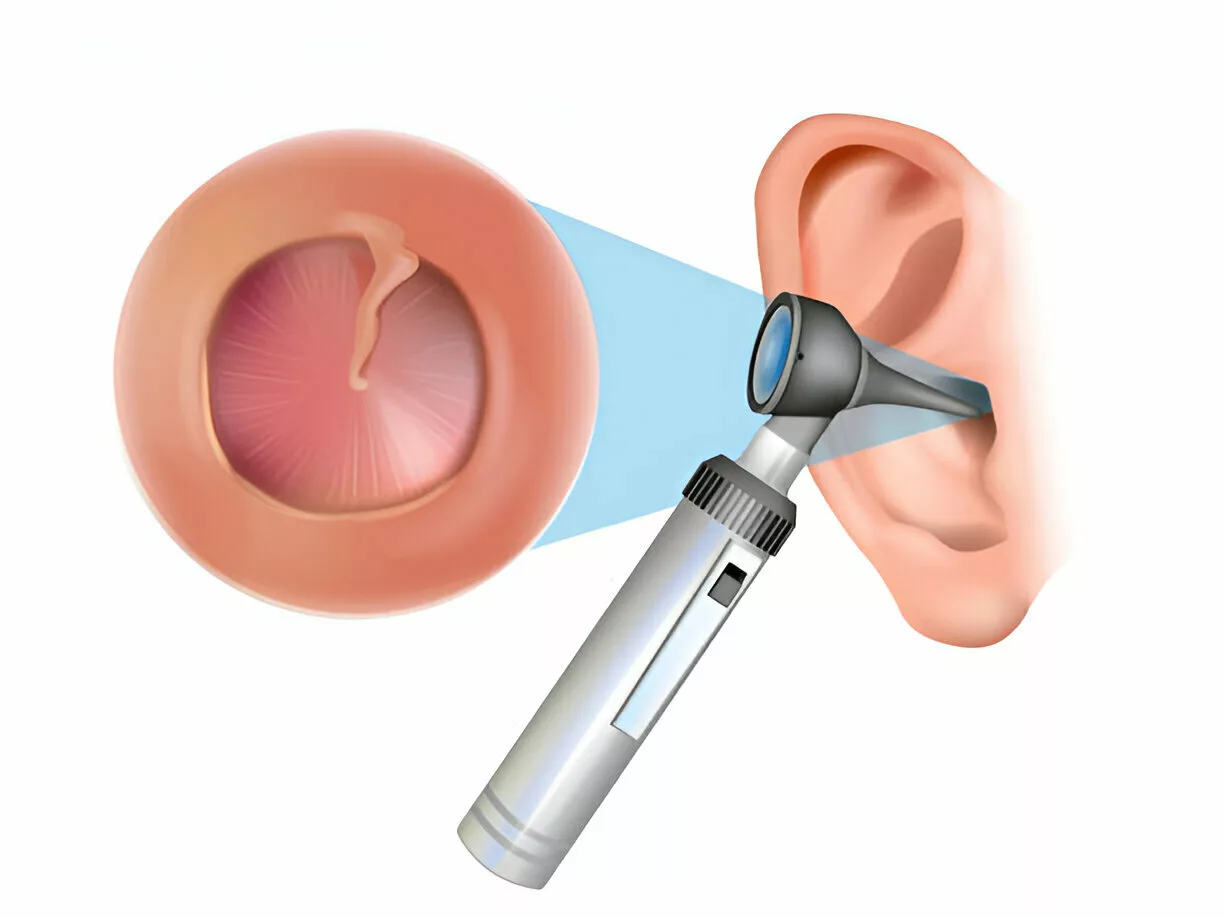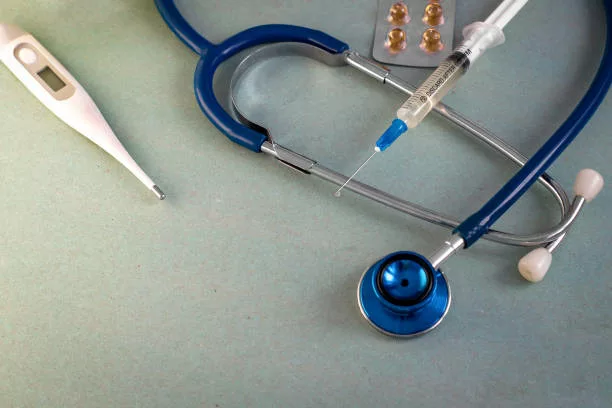Otitis Media is a general term used to describe the middle ear infection. Serous otitis media is a type of fluid buildup in the middle ear that occurs when acute otitis media doesn’t fully resolve or when the eustachian tube is obstructed without an active infection. This condition often leads to symptoms like hearing loss and a sensation of fullness or pressure in the ear. It is also commonly called MEE (Middle Ear Effusion), fluid in the ear, or secretory otitis media.1Assiri, K. S., Hudise, J. Y., & Obeid, A. (2023). Risk Factors for Chronic and Recurrent Otitis Media in Children: A Review Article. Indian Journal of Otolaryngology and Head & Neck Surgery. https://doi.org/10.1007/s12070-023-04256-5

Normally, this condition occurs without signs or symptoms of an ear infection. Severe otitis media can be developed due to allergies or an upper respiratory infection. It occurs mostly during early spring and fall.2Andrés Cervio, Ruella, M., Villamil, F., Carnevale, M., & Marengo, R. (2023). Chronic Serous Otitis Media with Effusion in Patients with “En Plaque” Meningiomas. Journal of Neurological Surgery. https://doi.org/10.1055/s-0043-1762346
What is Serous otitis media (SOM)?
Serous otitis media is a type of otitis media with effusion, where clear, watery fluid accumulates in the middle ear due to a rapid decrease in middle ear pressure relative to atmospheric pressure. This inflammatory process of the middle ear is usually observed in early childhood. It occurs when the Eustachian tube, which regulates ear pressure, becomes blocked. This blockage prevents air from entering the middle ear space, causing serous fluid from the ear lining to accumulate behind the eardrum, leading to a buildup that impedes normal eardrum movement.3 Tarhun, Y. M. (2020). The effect of passive smoking on the etiology of serous otitis media in children. American Journal of Otolaryngology, 41(3), 102398. https://doi.org/10.1016/j.amjoto.2020.102398 4Medscape. Serous Otitis Media. Available from: https://emedicine.medscape.com/article/858990-overview?form=fpf
It can be unilateral or bilateral and usually presents with mild to moderate HL (hearing loss). Additionally, there may be a feeling of pressure in the ear that infants may not always be able to describe or indicate.
SOM is characterized by effusion in the middle ear but without signs or symptoms of acute ear infection. In the initial stages, SOM results in hearing loss, but the trapped fluid can become infected with germs and lead to serious problems.5i Brú, J. D. L. F. (2022). Upper respiratory tract infections-2: otitis media (etiology, symptoms, and diagnosis; complications and treatment); recurrent acute otitis media and chronic otitis media; external otitis. Pediatría Integral, 352.
Serous Otitis Media Vs. Acute Otitis Media
AOM (acute otitis media) and SOM (serous otitis media) are distinct middle ear disorders. The primary differences are the presence of infection and the treatment options.
Serous otitis media (SOM) is characterized by a non-infected accumulation of fluid in the middle ear cavity. On the other hand, Acute otitis media (AOM) is a condition in which bacteria or viruses infect the middle ear. It usually occurs alongside an upper respiratory illness. Common symptoms of this condition include ear pain, often accompanied by other symptoms throughout the body, such as fever.
Although both conditions involve the presence of fluid in the middle ear cavity, in acute otitis media, the fluid is infectious, whereas in serous otitis media, it is not. The ratio of diagnosis for SOM to AOM is 2:1. Acute otitis media is often treated exclusively with antibiotics, and serous otitis media can be treated with antibiotics, decongestants, observation, or a mix of these treatment options.6Blakley BW, Varma A. Distinguishing between acute and serous otitis media. Can J Infect Dis Med Microbiol. 2005 Nov;16(6):363. PMID: 18159520; PMCID: PMC2094994.
Symptoms of Serous Otitis Media
Serous otitis media may not present symptoms. Furthermore, you may not even notice that you have it until a doctor’s physical checkup. Nevertheless, occasionally, sufficient fluid in the middle ear cavity causes one or more of the following symptoms.
- Trouble hearing
- Sleeping problems
- Balance problems
- Headaches
- Crying or fussiness
- Sounds are muffled
- Child pulling at their ear
- Tugging at the infected ear
- Difficulty hearing soft noises
- Fluid draining from the ear
- Hearing loss
- Ear discomfort or popping
- Ringing or buzzing in your ear
- High fever
- Ear pain
- A child has a change in behavior
- Plugged ear or the feeling of fullness in the ear.
It is difficult to determine whether children have ear infections or not. However, if you notice a persistent change in their behavior, you should seek the doctor’s guidance on ear conditions, including severe otitis media.7MacKeith, S., Mulvaney, C. A., Galbraith, K., Marom, T., Daniel, M., Venekamp, R. P., & Schilder, A. G. (2022). Adenoidectomy for otitis media with effusion (OME) in children. Cochrane Database of Systematic Reviews, 2022(4). https://doi.org/10.1002/14651858.cd015252
Risk Factors of SOM
Children are the most common demographic at risk for developing serous otitis media. In particular, fluid in the ear may cause six out of ten babies to fail their hearing test. Usually, this resolves in a month. However, if it remains unresolved, your child’s physician might need to assist with the fluid removal.8American Academy of Otolaryngology—Head and Neck Surgery. (2021). Ear fluid and newborn hearing screening [Patient information sheet]. https://www.entnet.org/wp-content/uploads/2021/04/patient_info_sheet_-_ear_fluid_and_newborn_hearing_screening-2_1.pdf
The differences between the eustachian tube in children and adults commonly cause this. Children’s tubes are more leveled and shorter, which reduces the likelihood of fluid leakage. On the other hand, adults’ tubes are longer and have a more slanted inclination, which helps gravity aid with middle ear drainage.
The age range during which children are most likely to experience middle ear fluid is six to eleven months, after which the likelihood declines. Before they become school-age, most kids will have experienced at least one fluid episode in the middle ear. Serous otitis media can still affect adults, but it is less common.9Stramielo, J. A., & Carvalho, D. (2023). Managing Risk Factors in Otitis Media. Springer EBooks, 237–243. https://doi.org/10.1007/978-3-031-40949-3_27
Conditions that your child may be born with that can increase their risk of developing fluid in the middle ear space include:
- Autism spectrum disorders
- Hearing disorders (not related to the fluid)
- Developmental disorders
- Blindness
- Cleft palate
- Down syndrome
- Speech and other language delays
- Other congenital (present at birth) facial bone abnormalities
- Common cold
- Allergies
- Cigarette smoke
- Adenoids that are enlarged and block the auditory tube10Stramielo, J. A., & Carvalho, D. (2023). Managing Risk Factors in Otitis Media. Springer EBooks, 237–243. https://doi.org/10.1007/978-3-031-40949-3_27
The diagnostic process of SOM
Your doctor can usually identify serous otitis media using clinical history and tests like tympanometry or pneumatic otoscopy.
Tympanometry
It measures the movement of the eardrum in response to changes in air pressure. Because fluid behind the eardrum affects its ability to move normally, tympanometry can detect the presence of fluid in the middle ears. The test shows that in 43% of cases of otitis media with effusion, there is a Type B result, which indicates a flat tympanogram. This suggests that fluid is present in the middle ear. Additionally, in 47% of these cases, the test shows a Type C result, which indicates negative pressure in the middle ear. This negative pressure can occur when the Eustachian tube isn’t working properly.11Medscape. Serous Otitis Media. Available from: https://emedicine.medscape.com/article/858990-overview?form=fpf
Otoscopy
During pneumatic otoscopy, the healthcare professional will use an otoscope with a bulb syringe attached to assess how well the eardrum responds to pressure changes when the bulb syringe is pressed. Fluid can also be determined by looking for color changes in the eardrum, which indicate changes behind the eardrum.12Bertel Grahne. (1964). Serous Otitis Media. Acta Oto-Laryngologica, 58(1-6), 1–8. https://doi.org/10.3109/00016486409121356

Treatment of SOM (Serous Otitis Media)
Effective management of SOM is tailored based on several factors:
- Child’s age.
- The severity and duration of the infection.
- The specific type of infection (first-time, continuous, or recurring).
- Evaluation of persistent fluid in the middle ear.
While some ear infections resolve spontaneously, close monitoring by a healthcare professional is essential. Treatment options such as antibiotics or surgery may be recommended in cases where symptoms persist. In the meantime, pain relievers can provide relief from discomfort and earache. In some cases, drainage of the accumulated fluid may be necessary.13Blakley, B. W., & Varma, A. (2005). Distinguishing between acute and serous otitis media. The Canadian Journal of Infectious Diseases & Medical Microbiology = Journal Canadien Des Maladies Infectieuses et de La Microbiologie Medicale, 16(6), 363. https://www.ncbi.nlm.nih.gov/pmc/articles/PMC2094994/
Observation:
For most patients, watchful waiting is the first line of the treatment. The condition usually resolves on its own in 2 to 3 weeks. However, it is essential to follow up for any new symptom or complication.
Medication
Your Doctor may prescribe you the following medications to help with the symptoms:
- The doctor may prescribe painkillers like acetaminophen or NSAIDs to help alleviate pain and reduce fever. It is important to follow the dosage instructions provided by your doctor carefully. Be sure to check the labels of any other medications you are currently taking to avoid potential interactions with acetaminophen. Consult your doctor or pharmacist if you have any concerns or questions about its usage.
- Antibiotics and decongestants are generally ineffective in treating this condition. However, if allergies are a contributing factor, antihistamines and nasal corticosteroids may provide some benefit.14Mârțu, C., Cozma, S., Cobzeanu, B., Vesa, D., Butnaru, C., Bularda, D., Cumpătă, A., & Rădulescu, L. (2021). Serous otitis media: Clinical and therapeutic considerations, including dexamethasone (C22H29FO5) intratympanic injection. Experimental and Therapeutic Medicine, 23(2). https://doi.org/10.3892/etm.2021.11048

Surgical Intervention:
If there is no improvement within 1 to 3 months, a myringotomy may be performed to drain the fluid and place a tympanostomy tube. This procedure facilitates ventilation of the middle ear and provides temporary relief from Eustachian tube blockage, regardless of its underlying cause. In a few cases, the doctor may go for Tymanocentesis, which involves inserting a needle through the eardrum to drain fluid. It can provide immediate relief and is both diagnostic and therapeutic.
Adjuvant Therapy
- Warm compress for an ear infection: A warm compress can alleviate ear pain. Soak a washcloth in warm water, wring out excess water, and hold it against the infected ear for 20 minutes, then reapply throughout the day.
- Rest: Adequate sleep supports the immune system, but it’s important to avoid putting pressure on infected ears during rest. In cases of serous otitis media affecting the middle ear, elevating the affected ear can help promote drainage and relieve pressure.
- Saltwater gargle: Saltwater can reduce inflammation and help with ear infections by gargling warm water, especially for swollen throats, rather than directly in the ear.
- Neck exercise: You can reduce pressure inside your ear canal by rotating and stretching your neck.15Mârțu, C., Cozma, S., Cobzeanu, B., Vesa, D., Butnaru, C., Bularda, D., Cumpătă, A., & Rădulescu, L. (2021). Serous otitis media: Clinical and therapeutic considerations, including dexamethasone (C22H29FO5) intratympanic injection. Experimental and Therapeutic Medicine, 23(2). https://doi.org/10.3892/etm.2021.11048
What is the difference between Serous and Suppurative Otitis Media?
Serous otitis media, often known as otitis media with effusion (OME) or glue ear, is described as middle ear fluid that lacks signs of acute infection. Acute otitis media is a sudden middle ear infection characterized by inflammation and fluid buildup, while suppurative otitis media is a more severe form involving pus accumulation, often as a complication of untreated acute otitis media. Purulent fluid in the middle ear, indicating an acute bacterial infection, is the hallmark of acute suppurative otitis media.16Tarhun, Y. M. (2020). The effect of passive smoking on the etiology of serous otitis media in children. American Journal of Otolaryngology, 41(3), 102398. https://doi.org/10.1016/j.amjoto.2020.102398
What can I do to avoid an ear infection or SOM?
Here are some tactics to lower your child’s chances of developing ear infections.
- Avoid secondhand smoke.
- Breastfeed your baby during the first six weeks or twelve months.
- Prevent colds and other respiratory illnesses.
- Stay up to date on vaccinations.
- Bottle-feed your baby in an upright position.17Lutfullaev, G. U., Sh. Sh. Kabilova, Lutfullaeva, G. U., Normirova, N. N., & Yunusova, N. A. (2022). TREATMENT OF EXUDATIVE OTITIS MEDIA IN WORLD PRACTICE. EUROPEAN JOURNAL of MODERN MEDICINE and PRACTICE, 2(11), 93–97. https://www.inovatus.es/index.php/ejmmp/article/view/1272
When should I visit my doctor in case of an ear infection?
Call your doctor immediately if:
- Your child gets a stiff neck.
- Your child is sluggish, appears or acts very unwell, or refuses to stop crying despite all efforts.
- Your child’s walk is unsteady.
- The earache you or your child are experiencing is serious.
- Your or your child’s fever exceeds 104 degrees Fahrenheit (40 degrees Celsius).
- Your child’s face reveals indicators of fragility. (Keep an eye out for a crooked smile.)
- You notice pus-filled fluid leaking from the ear.18Ruben, R. J. (2009). Serous otitis media in the 20th and 21st centuries: evolving views and treatments. Acta Oto-Laryngologica, 129(4), 343–347. https://doi.org/10.1080/00016480802454724
Bottom Lines
Serous otitis media (SOM) is a disorder in which liquid or mucus in the middle ear obstructs the eustachian tube. When this occurs, fluid can accumulate in the ear, causing pain or hearing loss.
SOM is most prevalent in children, but it can also affect adults. The issue normally resolves on its own over time, but in some situations, placement of ear tubes may be necessary.
Refrences
- 1Assiri, K. S., Hudise, J. Y., & Obeid, A. (2023). Risk Factors for Chronic and Recurrent Otitis Media in Children: A Review Article. Indian Journal of Otolaryngology and Head & Neck Surgery. https://doi.org/10.1007/s12070-023-04256-5
- 2Andrés Cervio, Ruella, M., Villamil, F., Carnevale, M., & Marengo, R. (2023). Chronic Serous Otitis Media with Effusion in Patients with “En Plaque” Meningiomas. Journal of Neurological Surgery. https://doi.org/10.1055/s-0043-1762346
- 3Tarhun, Y. M. (2020). The effect of passive smoking on the etiology of serous otitis media in children. American Journal of Otolaryngology, 41(3), 102398. https://doi.org/10.1016/j.amjoto.2020.102398
- 4Medscape. Serous Otitis Media. Available from: https://emedicine.medscape.com/article/858990-overview?form=fpf
- 5i Brú, J. D. L. F. (2022). Upper respiratory tract infections-2: otitis media (etiology, symptoms, and diagnosis; complications and treatment); recurrent acute otitis media and chronic otitis media; external otitis. Pediatría Integral, 352.
- 6Blakley BW, Varma A. Distinguishing between acute and serous otitis media. Can J Infect Dis Med Microbiol. 2005 Nov;16(6):363. PMID: 18159520; PMCID: PMC2094994.
- 7MacKeith, S., Mulvaney, C. A., Galbraith, K., Marom, T., Daniel, M., Venekamp, R. P., & Schilder, A. G. (2022). Adenoidectomy for otitis media with effusion (OME) in children. Cochrane Database of Systematic Reviews, 2022(4). https://doi.org/10.1002/14651858.cd015252
- 8American Academy of Otolaryngology—Head and Neck Surgery. (2021). Ear fluid and newborn hearing screening [Patient information sheet]. https://www.entnet.org/wp-content/uploads/2021/04/patient_info_sheet_-_ear_fluid_and_newborn_hearing_screening-2_1.pdf
- 9Stramielo, J. A., & Carvalho, D. (2023). Managing Risk Factors in Otitis Media. Springer EBooks, 237–243. https://doi.org/10.1007/978-3-031-40949-3_27
- 10Stramielo, J. A., & Carvalho, D. (2023). Managing Risk Factors in Otitis Media. Springer EBooks, 237–243. https://doi.org/10.1007/978-3-031-40949-3_27
- 11Medscape. Serous Otitis Media. Available from: https://emedicine.medscape.com/article/858990-overview?form=fpf
- 12Bertel Grahne. (1964). Serous Otitis Media. Acta Oto-Laryngologica, 58(1-6), 1–8. https://doi.org/10.3109/00016486409121356
- 13Blakley, B. W., & Varma, A. (2005). Distinguishing between acute and serous otitis media. The Canadian Journal of Infectious Diseases & Medical Microbiology = Journal Canadien Des Maladies Infectieuses et de La Microbiologie Medicale, 16(6), 363. https://www.ncbi.nlm.nih.gov/pmc/articles/PMC2094994/
- 14Mârțu, C., Cozma, S., Cobzeanu, B., Vesa, D., Butnaru, C., Bularda, D., Cumpătă, A., & Rădulescu, L. (2021). Serous otitis media: Clinical and therapeutic considerations, including dexamethasone (C22H29FO5) intratympanic injection. Experimental and Therapeutic Medicine, 23(2). https://doi.org/10.3892/etm.2021.11048
- 15Mârțu, C., Cozma, S., Cobzeanu, B., Vesa, D., Butnaru, C., Bularda, D., Cumpătă, A., & Rădulescu, L. (2021). Serous otitis media: Clinical and therapeutic considerations, including dexamethasone (C22H29FO5) intratympanic injection. Experimental and Therapeutic Medicine, 23(2). https://doi.org/10.3892/etm.2021.11048
- 16Tarhun, Y. M. (2020). The effect of passive smoking on the etiology of serous otitis media in children. American Journal of Otolaryngology, 41(3), 102398. https://doi.org/10.1016/j.amjoto.2020.102398
- 17Lutfullaev, G. U., Sh. Sh. Kabilova, Lutfullaeva, G. U., Normirova, N. N., & Yunusova, N. A. (2022). TREATMENT OF EXUDATIVE OTITIS MEDIA IN WORLD PRACTICE. EUROPEAN JOURNAL of MODERN MEDICINE and PRACTICE, 2(11), 93–97. https://www.inovatus.es/index.php/ejmmp/article/view/1272
- 18Ruben, R. J. (2009). Serous otitis media in the 20th and 21st centuries: evolving views and treatments. Acta Oto-Laryngologica, 129(4), 343–347. https://doi.org/10.1080/00016480802454724

